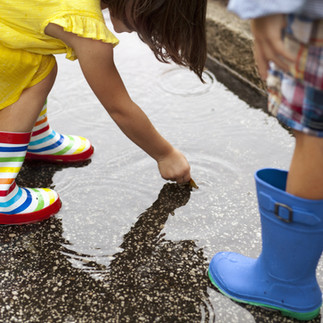In today’s fast-paced, screen-heavy world, it’s more important than ever to nurture creativity in children. While structured education teaches essential skills, a child’s imagination thrives when given the freedom to explore, create, and experiment. That’s why every child deserves a creative space—a dedicated area where they can dream, build, and express themselves without limits.

What Is a Creative Space?
A creative space isn’t just an art table or a craft bin (though those are great!). It’s any environment designed to inspire curiosity and self-expression. It can be a cozy reading nook, a backyard fort, a desk for drawing and writing, or even a kitchen corner for experimenting with new recipes. The goal is to create a space that encourages play, learning, and creativity—without rigid rules or expectations.
The Benefits of a Creative Space
Encourages Problem-Solving and Innovation
When kids have a space to explore their ideas freely, they learn to think outside the box. Whether they’re building a cardboard city, inventing a new game, or writing a short story, they develop problem-solving skills that will serve them for life.
Builds Confidence and Independence
Giving children a space where they can make decisions fosters independence. They learn that their ideas matter and that they have the power to bring them to life.
Reduces Stress and Promotes Emotional Well-Being
Creativity is a natural stress reliever. Whether through painting, writing, music, or movement, children use creative play to express their emotions in a healthy way.
Supports Learning in Unexpected Ways
Creativity isn’t separate from learning—it enhances it. A child playing with blocks is learning about engineering and spatial awareness. A child making up a story is developing literacy skills. A child experimenting with watercolor mixing is learning basic chemistry.
How to Create a Creative Space (Without Breaking the Bank)
Make It Accessible – Keep art supplies, building materials, or writing tools within reach so kids can create anytime inspiration strikes.
Let It Evolve – A creative space doesn’t have to be permanent. It can be a temporary setup at the kitchen table, a rotating shelf of supplies, or an outdoor area that changes with the seasons.
Encourage Open-Ended Play – Provide materials that inspire, rather than dictate, creativity. Items like LEGOs, blank notebooks, dress-up clothes, or nature finds allow kids to create their own worlds.
Celebrate Their Creations – Hang up artwork, display crafts, or let kids share their projects. Feeling proud of their work encourages them to keep creating.
Inspiring Creativity Through Exploration
A creative space isn’t just about art or crafts—it’s about exploration. Take kids outside to find inspiration in nature, let them experiment in the kitchen, or encourage them to make up stories and act them out. The possibilities are endless when we give children the freedom to create.
Every child is born with an imagination waiting to be nurtured. By providing a creative space—no matter how small or simple—we give them the gift of self-expression, confidence, and joy in learning.

Where is your child’s favorite place to create? Let us know in the comments!
By Brianna VanValkenburg






























コメント